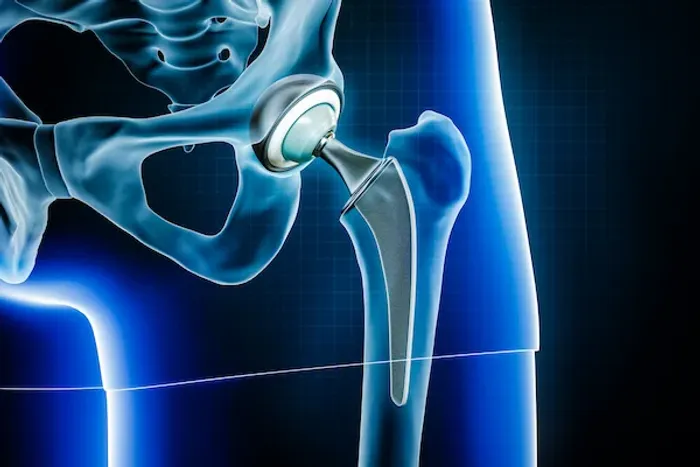Robotic Joint Replacement: Separating Medical Myth from Life-Changing Fact
Know about the robotic joint replacement, busting myths, what it is, benefits of joint replacement and role of surgeon and more.

Written by Dr. Vasanthasree Nair
Reviewed by Dr. D Bhanu Prakash MBBS, AFIH, Advanced certificate in critical care medicine, Fellowship in critical care medicine
Last updated on 9th Oct, 2025

Introduction
Imagine facing joint replacement surgery. For years, you’ve lived with the grinding pain of arthritis, and now, you’re researching your options. You keep hearing about "robotic surgery"—a term that sounds equal parts futuristic and intimidating. Is it a machine taking over? Is it just a marketing gimmick? The information overload can be confusing. This guide is designed to cut through the noise. We will dismantle the common myths and illuminate the proven facts about robotic joint replacement, empowering you to have an informed, confident conversation with your orthopaedic surgeon. Understanding the reality behind this advanced technology is the first step toward making the best decision for your mobility and quality of life.
What is Robotic-Arm Assisted Surgery, Really?
At its core, robotic joint replacement is not about replacing the surgeon with an automaton. Think of it as the most advanced surgical instrument ever created—a high-precision tool that augments the surgeon’s skill and experience. Systems like the Mako Robotic Arm are used in thousands of knee and hip replacements worldwide. The goal is simple: to execute the surgical plan with a level of accuracy that is incredibly difficult to achieve with the human hand alone.
Consult a Top Surgeon for Personalised Advice
The Surgeon is Still in Command: Your Guide is the Pilot
A crucial fact to understand is that the robotic system is entirely surgeon-controlled. The surgeon guides the robotic arm throughout the entire procedure. The system does not move on its own; it acts as an intelligent assistant that provides real-time feedback and ensures the surgeon stays within the pre-defined surgical plan. If the tool moves even a millimetre outside the planned boundary, the system will safely stop, preventing unintended bone removal. This partnership between human expertise and technological precision is the true power of robotic-assisted surgery.
The Pre-Surgical Plan: Blueprinting Your Perfect Alignment
Before you even enter the operating room, the magic begins. A CT scan of your joint is used to create a detailed 3D virtual model. Your surgeon uses this model to meticulously plan every aspect of the procedure—from the exact size and orientation of the implant to the specific amount of bone to be removed. This is like a tailor creating a custom-fitted suit instead of buying one off the rack. The plan is personalised to your unique anatomy, aiming to restore your joint’s natural alignment and function.
Top 5 Myths About Robotic Knee and Hip Replacement
Let's tackle the most pervasive myths head-on, replacing fear and uncertainty with clarity.
Myth #1: The Robot Performs the Surgery Autonomously
This is the most common and perhaps most alarming misconception. The image of a fully autonomous robot performing complex surgery is pure science fiction.
The Fact: Enhanced Surgical Precision
The reality is that the surgeon is actively performing the surgery from start to finish. The robotic arm is a tool they wield, much like a sculptor uses a chisel—but this chisel is smart. It provides haptic (touch) feedback and creates a virtual boundary, allowing the surgeon to remove only the diseased bone while protecting healthy tissue. This level of control is why many surgeons advocate for the technology; it translates their surgical skill into action with unprecedented accuracy.
Myth #2: Robotic Surgery is Experimental or Unproven
Some perceive robotics as a new, unproven frontier. In reality, this technology has a substantial track record.
The Fact: A Decade of Data and Refinement
Robotic-arm-assisted joint replacement has been used successfully for over a decade. Numerous peer-reviewed studies have demonstrated its benefits. For instance, a 2022 study published in the Journal of Knee Surgery found that patients who underwent robotic-assisted total knee replacement had significantly better implant alignment and early functional scores compared to those with conventional surgery. It is a refined, evidence-based tool, not an experimental procedure.
Myth #3: It’s Only for Young, Active Patients
There's an assumption that this advanced technology is reserved for athletes or younger individuals who want to return to high-impact activities.
The Fact: Benefits for a Wide Range of Ages
The precision of robotic surgery benefits patients of all ages. For an older patient, preserving healthy bone and achieving optimal implant alignment can mean a more stable joint, less post-operative pain, and a lower risk of complications. The goal isn't just to enable a return to sports; it's to ensure a successful, lasting outcome that improves quality of life, whether that means walking the dog pain-free or simply navigating stairs with confidence.
Myth #4: The Recovery is Much Faster and Easier
Marketing can sometimes create unrealistic expectations, suggesting that robotic surgery is a "miracle cure" with an instant recovery.
The Fact: A Smoother, More Predictable Recovery Journey
While recovery varies by individual, the primary benefit is often the quality of recovery, not necessarily the speed. Because the procedure is more precise and less traumatic to surrounding tissues, many patients experience less pain and swelling in the immediate days following surgery. This can lead to a more comfortable early recovery and may allow for a more effective start to physical therapy. The recovery still requires dedication and hard work, but the path is often smoother and more predictable.
Myth #5: It’s Prohibitively Expensive and Not Covered by Insurance
Cost is a major concern for many patients, and the "high-tech" label can suggest a hefty price tag.
The Fact: Increasingly Accessible and Covered Care
As robotic systems have become more common, the cost dynamics have changed. In many cases, the procedure is covered by major insurance providers, including Medicare, when deemed medically necessary by your surgeon. It's always essential to verify coverage with your insurance company and the hospital. The potential for better outcomes and lower revision rates may also make it a cost-effective choice in the long run for the healthcare system. If you are considering this option, consulting a doctor online with Apollo24|7 can help you connect with orthopaedic specialists who can provide clarity on costs and insurance specifics.
The Undeniable Facts: Proven Benefits of Robotic Assistance
Beyond debunking myths, let's focus on the concrete advantages supported by clinical evidence.
Unmatched Precision in Implant Placement
The single greatest benefit is accuracy. Studies consistently show that robotic assistance leads to more precise placement of the implant according to the surgical plan. Proper alignment is critical for the joint to feel natural, function correctly, and last for decades. Even a few degrees of deviation in conventional surgery can lead to uneven wear, instability, and a less satisfactory outcome.
Potentially Increased Longevity of Your New Joint
Precision today translates to durability tomorrow. A well-aligned implant experiences more even distribution of forces, which reduces the rate of wear on the plastic spacer. This has the potential to significantly increase the lifespan of the replacement joint, potentially reducing the need for a more complex revision surgery down the line.
Preserving Healthy Bone and Soft Tissue
Traditional surgery relies heavily on the surgeon's visual and tactile judgment. The robotic system’s virtual boundaries act as a safeguard, helping the surgeon remove only the arthritic bone while sparing the healthy ligaments and tissue around it. This tissue-sparing approach is a key reason why patients may experience a more natural "feel" in their new joint.
Are You a Candidate for Robotic Joint Replacement?
Candidacy for any joint replacement is determined on an individual basis. The decision is made by you and your orthopaedic surgeon after a thorough evaluation. Generally, candidates are individuals with moderate to severe arthritis whose pain has not responded adequately to conservative treatments like medication, injections, or physical therapy. Robotic assistance is a tool that can benefit most patients who are already candidates for traditional joint replacement. The best way to know if it's right for you is to discuss your specific condition, goals, and concerns with an experienced orthopaedic surgeon.
Conclusion
The journey to a new joint is a significant one, and being armed with accurate information is your greatest asset. Robotic joint replacement is not a magical solution, but a powerful evolution in surgical care that prioritises precision, personalisation, and patient safety. By separating the myths from the facts, you can move past the fear of the unknown and focus on what truly matters: restoring your mobility and reclaiming your life from arthritis pain. The next step is to consult with a qualified orthopaedic specialist who can evaluate your individual needs. If your joint pain is limiting your daily activities, consider booking a physical visit to an orthopaedic doctor with Apollo24|7 to explore all your treatment options, including the potential benefits of robotic-assisted techniques.
Consult a Top Surgeon for Personalised Advice
Consult a Top Surgeon for Personalised Advice

Dr Rohith H R
Paediatrician
10 Years • MBBS, DCH, MD, DNB
Bengaluru
Apollo Clinic, JP nagar, Bengaluru
(25+ Patients)

Dr. Dikpati Mukherjee
Paediatrician
12 Years • MBBS, MD (Paed.)
Kolkata
MCR SUPER SPECIALITY POLY CLINIC & PATHOLOGY, Kolkata

Dr. S V S Sreedhar
Paediatrician
18 Years • MBBS,MD(Paediatrics) FIPEM(Fellowship in Paediatric Emergency Medicine) STEP, PGDID (PG Diploma In Infectious Diseases, Australia) Senior Pediatrician & HOD of the PAEDIATRIC EMERGENCY DEPARTMENT SENIOR SONSULTANT IN PEDIATRICS & PAEDIATRIC EMERGENCY MEDICINE Clinical supervisor for RCEM, UK. Clinical tutor in MACQUARIE University, Australia.
Hyderabad
Navyo childrens clinic, Hyderabad
(350+ Patients)

Dr. Saheli Dasgupta
Paediatrician
11 Years • MBBS, MD (Paediatrics), Indian Diploma of Paediatric Critical Care Medicine
Kolkata
Sristi Polyclinic, Kolkata

Dr. Kalale Nikhil Nagaraj
Paediatrician
10 Years • MBBS DNB PEDIATRICS
Bengaluru
Apollo Clinic, JP nagar, Bengaluru




